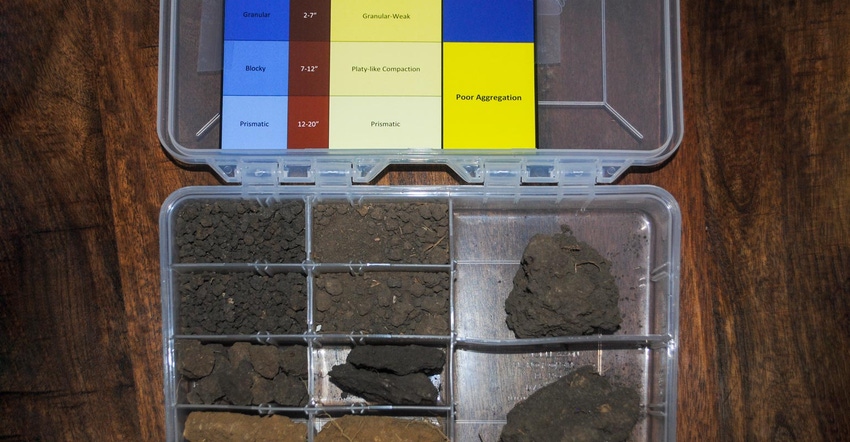
Soil testing has really changed over the past decade. With strong national focus on soil health and new tests that strive to track microbial community activity as well as nutrients in the soil, everything has changed in how farmers and ranchers look at soil health.
“We talk about soil health in so many different ways,” said John Breker, soil scientist for Agvise Laboratories, Northwood, N.D., while speaking to participants of the South Dakota Soil Health School, which was held recently in Mitchell, S.D. “How do we actually measure it? There are so many different kinds of tests.”
For Breker, a soil test must teach producers something about their own soils and it must offer an actionable result.
Soil aggregate stability testing has been a research tool since the 1930s, but Breker told the group that Agvise has recently improved the manual testing process, developing an automated method in conjunction with North Dakota State University. This improvement is allowing an old soil quality testing procedure to become commercially available to producers looking to track soil health in a visual way that can be followed through the years.
“Any useful test has to meet some criteria,” he said. “It has to be a repeatable procedure that we can do in a laboratory. It has to be inexpensive, or at least affordable if we plan to do it every few years as a tracking tool.”
The test should also have university validation along the line, so interpretation can be defined.
Newer biological tests are very dynamic during the growing season, Breker noted. Producers need to understand this when utilizing the tests.
“Set benchmarks and measure each field or zone independently from each other,” he said. “Collect soil samples the same time each year.”
The soil aggregate stability test, which measures soil tilth, is one of the few soil health tests that looks at physical soil properties.
“When testing for microbial activity, you are trying to track a moving target,” Breker said. “It can be widely variable throughout the growing season.”
Farmers looking to reduce tillage or add cover crops are looking for improvement in physical soil structure. Over time, the soil aggregate stability test can track that through a numerical scoring system, giving producers an idea if microaggregates are forming macroaggregates or large macroaggregates under specific management practices.
In research laboratories, aggregates were always tested manually, dunking them in water a specified number of times and swirling samples in a circular fashion. Agvise recently built an automated method to conduct the test, taking the human error and variability out of the testing procedure.
While the test has been utilized for decades as a popular way to track soil quality, especially in range management research, the human technician-to-technician variability was a hindrance from making the tests more widely available. The automated approach has changed that.
If farmers are using conventional tillage and moving to reduced or no-till, they might be interested in this testing, Breker said.
“They might also be interested if they are long-term no-tillers and are switching to strip till, because they want to make sure they are not harming their soil health,” he said. “Soil texture is very important to aggregate stability.
“Sandy soils are more challenging, because producers might get higher numbers in aggregate tests because the sand particles are the same size as small aggregates. The test is still useful in tracking within a field, but you can’t compare the numbers to other fields or to the neighbor’s field. In that case, we might have to do a sand correction to improve the accuracy of measuring aggregates.”
You can’t use a soil probe to take samples for this test, Breker said.
“You have to use a shovel or bulb planter to get a clean little slice of soil to send to the lab for testing,” he said.
Producers should mark sampling spots with GPS and return to the exact same location in the future for testing, in order to track changes correctly.
“You don’t want to add spatial variability to the testing, because the aggregate stability will not change overnight,” he said. “Samples need to be specifically marked for aggregate testing when sent to the lab, so they do not get dried and ground like samples are processed for other tests.”
While soil aggregate stability testing may be available in several laboratories across the country, Agvise is the lab that automated the procedure, Breker said. There are other labs that may offer the testing to farmers, but their procedures could be different from the Agvise automated procedure.
You can learn more by calling Breker at 701-587-6010.
Read more about:
Soil TestingAbout the Author(s)
You May Also Like






